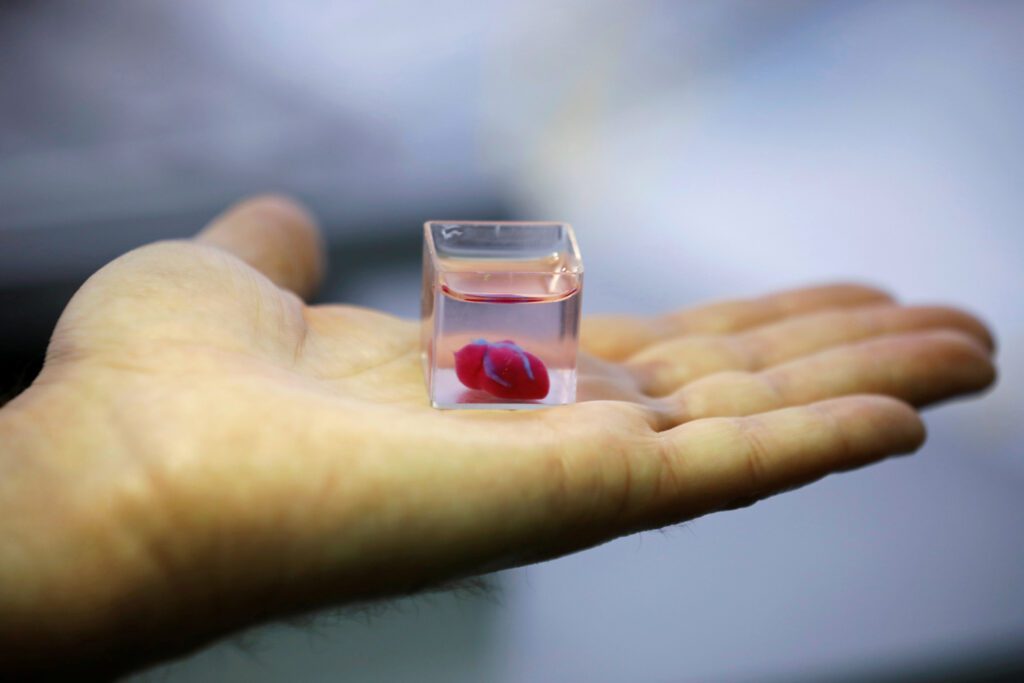Thanks to the ever-evolving technology of 3D-Printing, scientists have finally made a way to make their own organs and prosthetics for their patients. But did you know that a modified 3D printer made it possible?
In 2019, a group of scientists from Tel Aviv University was able to print a human heart using a patient’s cells successfully. The biological materials used were said to completely match the patient’s immunological, cellular, biochemical, and anatomical properties.
What is 3D-Bioprinting?
3D Printing is a form of manufacturing that uses human cells and other biocompatible materials as ink or bio-inks to print living structures layer-by-layer, which mimic the behavior of natural living systems.
These bioprinted structures are often used to study how a particular organ works outside the body. The geometry of a bioprinted system is very similar to that of a natural organ and more accurate to use in the field of tissue engineering and bioengineering. The process of bioprinting is also utilized in pharmaceutical research and development.
Soon enough, bioprinting will be used for clinical applications such as skin grafting, bone grafting, implants, biomedical devices, and yes, even 3D-printing organs. (Source: Allevi by 3D Systems)
How Can 3D-Printing Organs Save Lives?
Thousands of patients are currently waiting for organs to prolong their lives, but due to global organ shortages and a limited number of organ donors, several of these patients die before a transplant is available. While tissue engineering is just a new field, biomedical engineers are developing revolutionary solutions through 3D-printed organ structures that act as scaffolds that may help regenerate tissue that has been damaged.
The technology behind this advancement will eventually lead to the creation of artificial organs that can replace the need for a live organ transplant. (Source: The Conversation)
The 3D-Printed Heart
In 2019, researchers from Tel Aviv University were able to 3D print a heart using a patient’s cells. This is a massive breakthrough in 3D bioprinting.
This is the first time anyone anywhere has successfully engineered and printed an entire heart replete with cells, blood vessels, ventricles and chambers. At this stage, our 3D heart is small, the size of a rabbit’s heart. But larger human hearts require the same technology. The biocompatibility of engineered materials is crucial to eliminating the risk of implant rejection, which jeopardizes the success of such treatments. The cells need to form a pumping ability; they can currently contract, but we need them to work together. Maybe, in ten years, there will be organ printers in the finest hospitals around the world, and these procedures will be conducted routinely.
Professor Tal Dvir, Molecular Cell Biology and Biotechnology, Tel Aviv University
The bioprinting of the heart involves harvesting fatty tissue that surrounds the patient’s abdominal organs. The research team then separated the cells in the tissue from the extracellular matrix. The cells were then programmed to work as stems cells with the added ability to differentiate into heart cells. The matrix was then processed into a hydrogel and served as the bio-ink.
